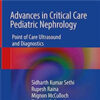When Should I Worry About a PE in a Patient with COVID-19
canadiem.orgPE diagnosis in COVID-19 patients is challenging. Many of the features of PE, such as shortness of breath and hypoxemia, are very common in patients with COVID-19, even in the absence of PE. Further, the diagnostic tests that we rely on, such as CT scans, may not be immediately accessible in a pandemic environment.
While imaging should be obtained as soon as possible, it is important to not delay treatment in high risk cases. As a result, a presumptive diagnosis of PE may need to be made (and anticoagulation started) based on less information and certainty.
Any diagnostic approach for VTE should begin with consideration of how common clots are in the population of interest (i.e. pre-test probability).
For hospitalized patients with COVID-19, we expect a higher rate of PE or DVT diagnosis than in non COVID-19 patients.
Reports suggest that up to 40% of patients with severe COVID-19 infections may develop symptomatic blood clots despite being on prophylactic or intermediate dose (e.g. 50% dose) blood thinners.
Our patient’s risk for blood clots is further increased due to ICU admission.

















